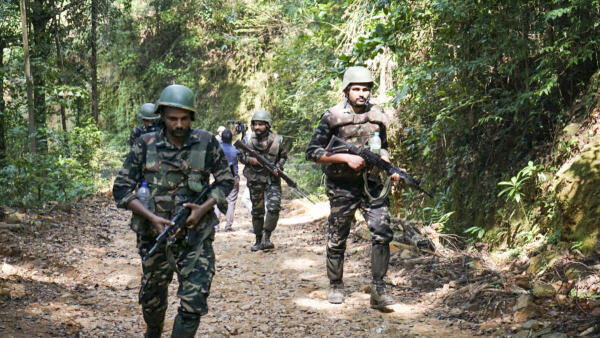NewsGate Press Network
Data and related statistics released by the Home Ministry suggests that security forces have made major inroads into the dense Abujhmaand forests in Chhattisgarh in ‘Red Corridors’ a term that is used for districts affected by Left Wing Extremism.
The counter-Naxal strategy through an integrated approach combining security, development, and rehabilitation has shown encouraging results and working towards the target of achieving all affected districts Naxal-free by 2026.
Figures released by the Home Ministry on Saturday the 25th of October 2025, – between 2004–2014 and 2014–2024, violent incidents dropped from 16,463 to 7,744, deaths of security personnel fell from 1,851 to 509, and civilian deaths declined from 4,766 to 1,495, a remarkable sign of restored peace and governance in affected regions.
In 2025 alone, security forces neutralised 270 Naxals, arrested 680, and facilitated 1,225 surrenders.
Major operations such as Operation Black Forest and mass surrenders in Bijapur, Chhattisgarh, and Maharashtra underline growing confidence among insurgents to rejoin mainstream life.
In the last decade, 576 fortified police stations have been built, and 336 new security camps have been established in the last six years.
The number of Naxal-affected districts reduced from 126 in 2014 to 18 in 2024, with only 6 districts now categorised as most-affected.
Financial networks sustaining Naxalism have been systematically dismantled. A special vertical within the National Investigation Agency (NIA) has seized assets worth over ₹40 crore, while Enforcement Directorate (ED) operations led to confiscations worth ₹12 crore.
States have also seized properties worth ₹40 crore.
Additionally, urban naxals have suffered significant moral and psychological setbacks, leading to a decline in their capacity for information warfare.
Empowering state forces has been a cornerstone of the government’s Left-Wing Extremism (LWE) policy. Under the Security Related Expenditure (SRE) scheme, ₹3,331 crore was released to LWE-affected states over the past 11 years, a 155% increase compared to the previous decade.
Infrastructure Development
Development of critical infrastructure has accelerated social and economic inclusion in Naxal-affected areas.
- Road Connectivity: Between 2014 and 2025, over 12,000 km of roads were completed, with ₹20,815 crore approved for 17,589 km of total construction.
- Mobile Connectivity: The expansion of mobile connectivity in Left Wing Extremism (LWE)-affected areas has been implemented in two phases. Under Phase I, 2,343 (2G) towers were constructed at a cost of ₹4,080 crore. In Phase II, 2,542 (4G) towers were sanctioned with an investment of ₹2,210 crore in September–October 2022, out of which 1,139 have become operational.
Additionally, 8,527 (4G) towers have been approved for LWE-affected regions. Under the Aspirational Districts Plan, 2,556 of the 4,281 approved towers are functional, while under the 4G Saturation Plan, 2,602 out of 4,246 towers are operational.
- Financial Inclusion and Accessibility: 1007 bank branches, 937 ATMs, and 37,850 banking correspondents have been established. 5,899 post offices now operate across 90 districts, ensuring that every 5 km, citizens have access to postal and financial services.
- Education and Skill Development: Under Kaushal Vikas Yojana, ₹495 crore was sanctioned to set up 48 Industrial Training Institutes (ITIs) and 61 Skill Development Centres (SDCs) in 48 districts, of which 46 ITIs and 49 SDCs are operational. These institutions are providing new livelihood opportunities to the youth transitioning from conflict to development.
- Security and Enforcement: A total of 108 cases have been investigated, resulting in 87 charge sheets filed so far. The Bastariya Battalion, formed in 2018, comprises 1,143 recruits, including 400 youth from Bijapur, Sukma, and Dantewada districts, symbolizing local participation and trust-building in security operations.


Comments are closed for this post.